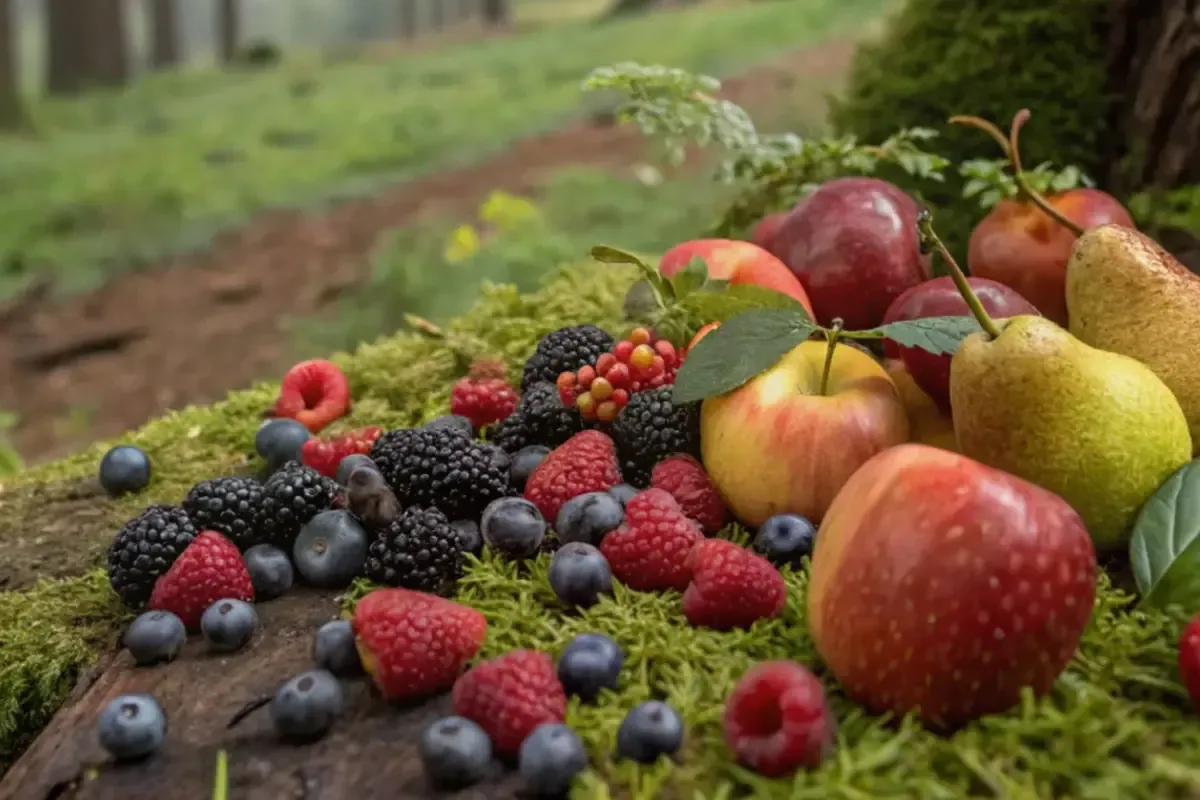Wild fruit puree: what are its applications and benefits?

Do you know what makes wild fruits so special? They can grow without being cultivated, thriving naturally. They vary worldwide, from the popular berries, sometimes also known as red fruits, to tropical species such as guava and passion fruit. Therefore, we would like to tell you about the different applications of wild fruits puree in food processing, and its benefits.
The world of wild fruits
In common, this variety of fruit tends to combine sweet and sour flavors. It has a moderated caloric and carbohydrate content while still being rich in fiber, vitamin C, and some minerals. In special, it stands out for its high antioxidant content (Gleim, 2023).
People value antioxidants in food intake due to their contribution to health and their association with skin care, among other benefits (Cleveland Clinic, 2022; La Española, 2023).
Furthermore, these fruits stand out for their versatility. People can consume them fresh or use them as ingredients in countless homemade preparations. For this reason, they are very popular in smoothies, juices, sweets, and sauces (Gleim, 2023).
Their role in the food industry is quite popular. They usually appear as inputs for the creation of different products.
Wild fruits: an ingredient with potential
Multiple areas of the food industry use these fruits. For example, blueberries and blackberries are among the flavors that appeal to consumers of alcoholic beverages. The same applies to wild cherries and guava in the realm of non-alcoholic options. Similarly, various types of wild fruits captivate palates in the dairy, dessert, and confectionery categories (T. Hasegawa, 2022).
Additionally, their versatility is such that they can be the main flavor or used as part of bold fruit pairings that appeal to consumers. Blueberries, for instance, are not only very popular on their own, but they also pair well with apples, pomegranates, and lemons. Guava, for its part, is one of the most recognized Colombian fruits. It is a favorite choice to combine with strawberry, passion fruit, and other tropical fruits, such as papaya fruit (FONA International, 2021).
Leading wild fruit applications
These are some food products where these fruits shine (FONA International, 2021; T. Hasegawa, 2022):
- Blueberry: bakery, dairy and snacks.
- Cherry: snacks, confectionery, desserts, and ice cream.
- Guava: juices, alcoholic beverages, desserts, and spreadable.
- Currant: confectionery, alcoholic beverages and spreadable.
- Blackberry: non-alcoholic beverages (juices, carbonated water, flavored water, sports, and nutritional drinks, among others).
Benefits of wild fruit puree in the food industry
In essence, fruit puree is a viscous substance obtained by processing fresh fruit. This process includes washing, peeling, crushing, pulping, and refining the fruit. Producers implement hot or cold processing methods, depending on the features they want to prioritize in the puree, such as color, texture, flavor, aroma, consistency, or shelf life (Fruit Processing Machine, n.d.).
This input is on the rise, as it effectively acts as a natural sweetener. It also improves the flavor, texture, and color of products. In addition, the food producer finds puree convenient and practical. They can easily transport and store it compared to fresh fruit (Persistence Market Research, 2023).
For this reason, its global market reached $ 4.54 trillion in 2023. It is expected to expand to $ 6.25 trillion by 2028, with a compound annual growth rate of 6.4 %. The drivers of this performance are several. For example (The Business Research Company, 2024):
- A growing demand for healthy food options.
- The development of the functional food segment.
- The marked use of fruit puree to produce desserts and snacks.
- The pursuit of consumer trends such as sustainable, clean label and plant-based dietary products.
- Innovations in flavor combinations.
- Interest in exotic and tropical flavor profiles.
Success of these fruits
Wild fruits puree can greatly exploit the latter two factors. As mentioned, you can easily combine this type of fruit to create attractive options for consumers. It is also well suited to the elaboration of products with exotic flavors. Certainly, blackberry puree or guava puree can be ideal ingredients for this purpose.
This is the way food producers currently position wild fruits and their puree as useful and versatile inputs. At Alimentos SAS we work to offer an incomparable range of this type of ingredients, with superior quality.
Bibliographic references
- Cleveland Clinic. (2022, July 19). Why You Should Care About Free Radicals.
- FONA International. (2021). Trending fruit flavors 2021 & beyond.
- Fruit Processing Machine. (n.d.): Fruit pulp processing description.
- Gleim, S. (2023, September 8). Berries: Health Benefits, Nutrition, and Uses. WebMD.
- La Española. (2023, April 12). Descubre las propiedades saludables de los frutos del bosque.
- Persistence Market Research. (2023). Fruit puree market.
- T. Hasegawa. (2022). Food and Beverage Flavor Trends Report.
- The Business Research Company. (2024). Fruit Puree Global Market Report 2024. Research and Markets.













